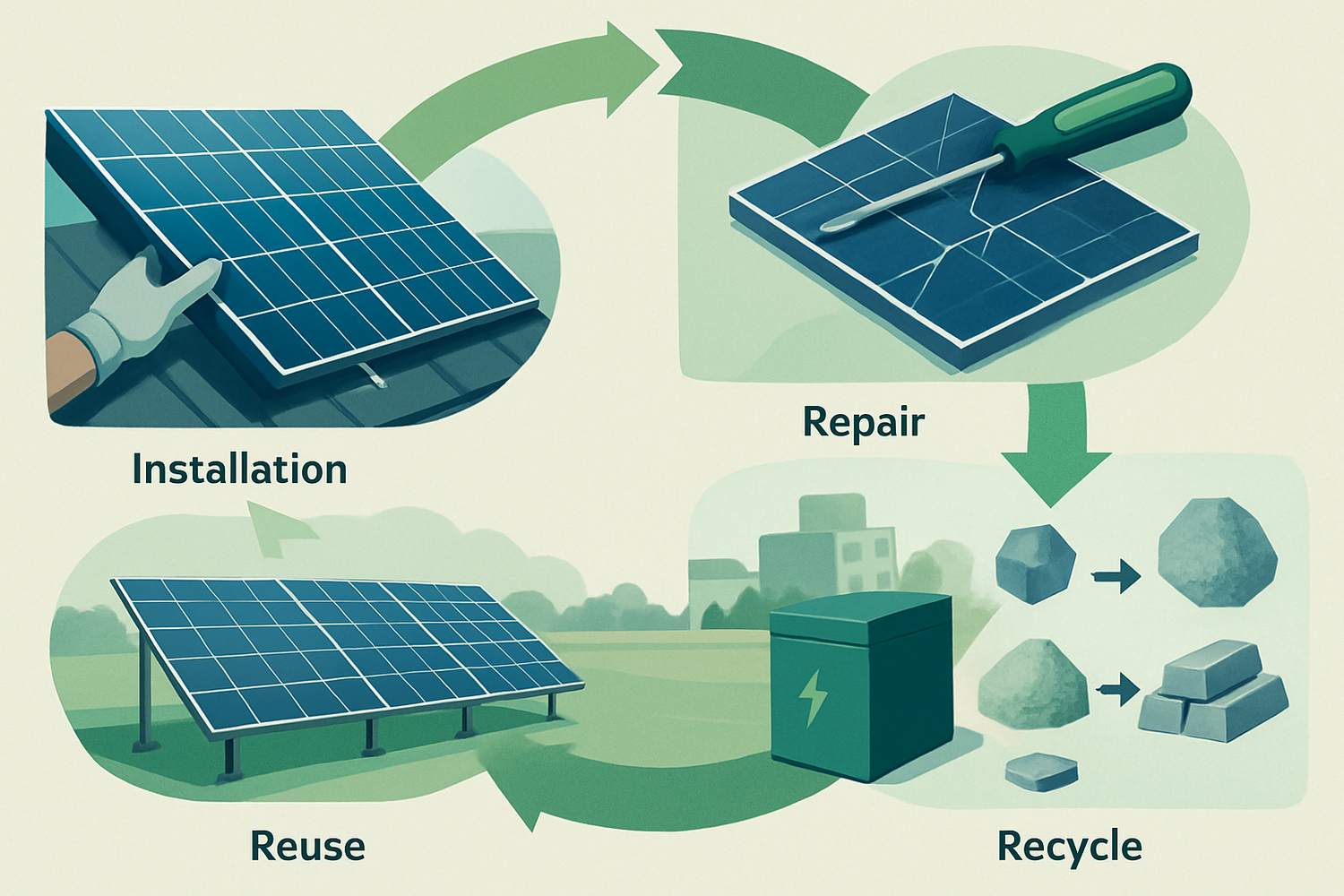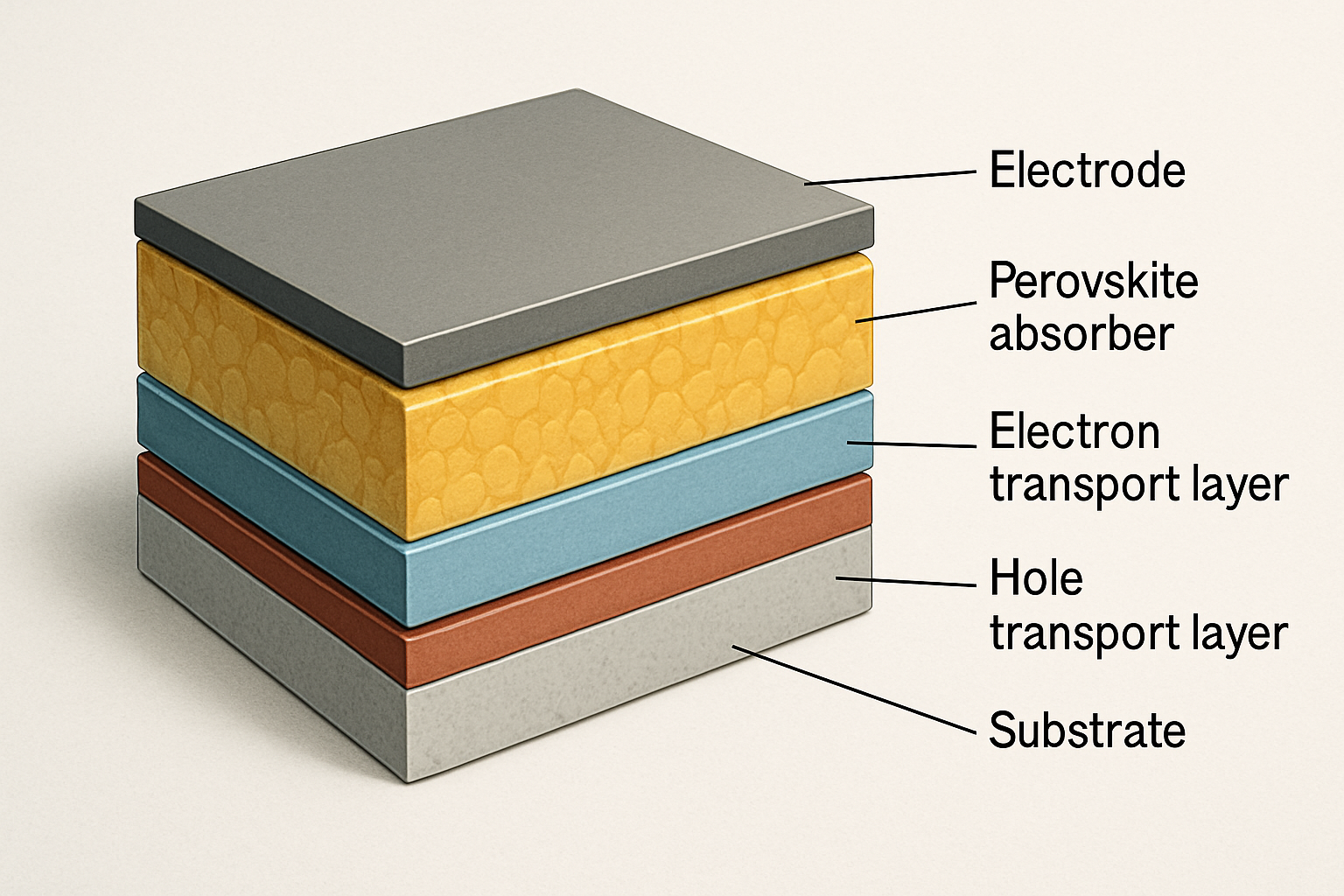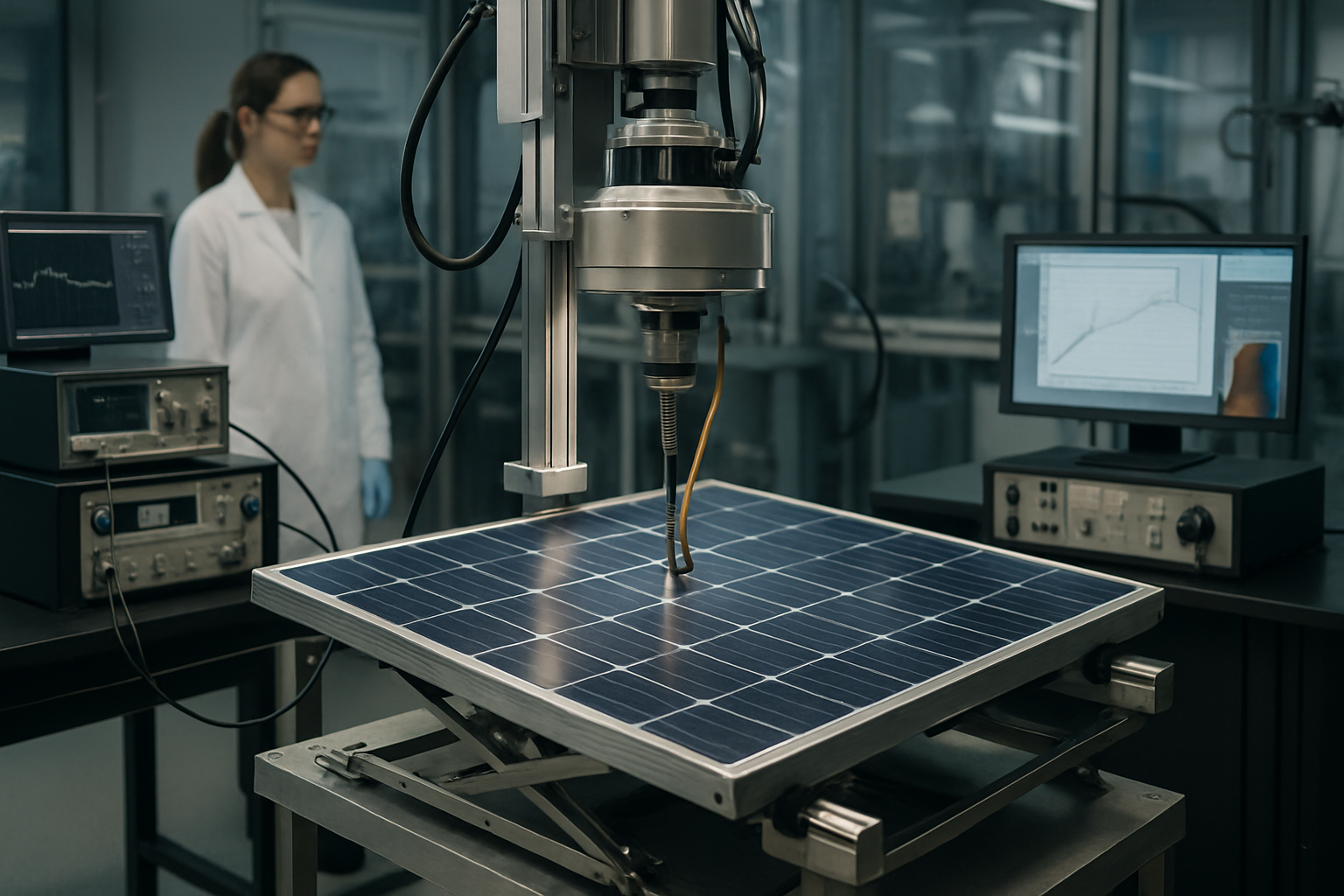The rapid expansion of solar power is a cornerstone of the global energy transition. Yet, this growth brings a new challenge: managing an increasing volume of end-of-life (EOL) photovoltaic (PV) modules and energy storage systems (ESS). A traditional linear model of 'take-make-dispose' is unsustainable. The solution lies in a circular economy, a framework designed to eliminate waste and keep materials in use. Shifting to circular business models is not just an environmental necessity but a significant economic opportunity for the solar industry.

The Need for a Circular Approach in Solar
As the solar industry matures, the volume of decommissioned panels and batteries will surge. Projections show that PV panel waste could amount to 78 million tonnes globally by 2050. According to a joint report by the International Renewable Energy Agency (IRENA) and the International Energy Agency Photovoltaic Power Systems Programme (IEA-PVPS), the value of recovered materials could exceed $15 billion by that time. This highlights a clear incentive to move beyond simple disposal.
From Linear Waste to Circular Value
A circular economy is a systemic approach to economic development designed to benefit businesses, society, and the environment. In contrast to the 'take-make-waste' linear model, a circular economy is regenerative by design. For PV modules and ESS, this involves a holistic lifecycle approach, including design for longevity, maintenance, reuse, remanufacturing, and recycling.
A Systems Framework for Circularity
Implementing a circular economy for PV and ESS requires a comprehensive framework. This includes designing products for easier disassembly, creating systems for in-field repairs, and developing platforms for second-life applications. It also involves establishing advanced recycling processes that can recover high-purity materials, effectively closing the loop and reducing the demand for virgin resources.
Models Focused on Extending Product Lifespan
The most effective way to reduce waste is to extend the life of products. These models prioritize keeping PV modules and ESS functional for as long as possible.
1. Repair and Refurbishment
This model focuses on fixing faulty or underperforming components to restore functionality. For PV modules, this could mean replacing a junction box or repairing microcracks. For ESS, it might involve replacing degraded battery cells. Refurbishment goes a step further by reconditioning used products to meet specific quality standards, making them available for resale with a warranty.
2. Remanufacturing
Remanufacturing is an industrial process where used products are returned to a like-new condition. Unlike refurbishment, it involves complete disassembly, cleaning, and inspection of all components. Worn-out parts are replaced, and the product is reassembled to meet original factory specifications. This model significantly conserves raw materials and energy compared to manufacturing a new product.
3. Repurposing for Second-Life Applications
Many products have a useful 'second life' in less demanding roles. This is particularly true for ESS batteries. When a battery no longer meets the rigorous demands of its primary application (like an electric vehicle), it often retains 70-80% of its original capacity. These second-life batteries are ideal for stationary energy storage, where they can support grid stability or provide backup power for homes and businesses.
Innovative Service-Based Models
Service-based models shift the focus from selling products to providing solutions. This change in ownership creates powerful incentives for durability, maintenance, and end-of-life management.
4. Product-as-a-Service (PaaS)
In a PaaS model, also known as a Product-Service System (PSS), customers pay for the service—in this case, solar energy or stored power—rather than owning the physical PV panels or batteries. The provider retains ownership and is responsible for installation, maintenance, and eventual replacement. This model incentivizes manufacturers to design highly durable, reliable, and easily repairable products to maximize their operational life and profitability.
5. Leasing and Sharing Platforms
Leasing models offer a lower upfront cost for customers to access solar energy and storage. Similar to PaaS, the leasing company owns the equipment and is responsible for its lifecycle. Sharing platforms, such as community solar projects or shared energy storage facilities, allow multiple users to benefit from a single system. This maximizes the asset's utilization rate and reduces the overall number of new products needed.
Models for Material Recovery and Value Creation
When a product truly reaches the end of its useful life, these models ensure its constituent materials are recovered and reintroduced into the economy.
6. Advanced Recycling and Material Recovery
Modern recycling goes far beyond shredding. Advanced techniques can recover a high percentage of valuable materials from PV modules and lithium-ion batteries. For solar panels, this includes high-purity silicon, silver, copper, and aluminum. For batteries, critical minerals like lithium, cobalt, and nickel can be extracted. Recovering these materials reduces the environmental impact of mining and creates a secure domestic supply chain.
7. Industrial Symbiosis
Industrial symbiosis creates closed-loop systems by turning the waste stream from one industrial process into a raw material for another. For example, the glass recovered from recycled PV panels can be used to produce new glass containers or as an aggregate in construction materials. Aluminum frames can be melted down and used in countless other industries. This collaborative approach minimizes landfill waste and creates new value chains.
| Business Model | Primary Goal | Key Activities | Value Proposition |
|---|---|---|---|
| Repair & Refurbishment | Extend product life | Component replacement, reconditioning | Lower-cost products, waste reduction |
| Remanufacturing | Restore to 'like-new' | Complete disassembly and rebuilding | High-quality alternative to new products |
| Second-Life Applications | Find new use cases | Testing, recertification, integration | Extracts full value from assets (especially batteries) |
| Product-as-a-Service (PaaS) | Sell a service, not a product | Leasing, maintenance, EOL management | No upfront cost, hassle-free operation for users |
| Leasing & Sharing | Increase asset utilization | Financial agreements, community platforms | Wider access to solar, reduced resource intensity |
| Advanced Recycling | Recover raw materials | Material separation, purification | Creates secondary raw materials, reduces mining |
| Industrial Symbiosis | Eliminate waste | Cross-industry collaboration | Turns waste into a resource for another sector |
Embracing a Sustainable Energy Future
The transition to a circular economy is essential for the long-term health and sustainability of the solar and energy storage industries. These seven business models offer a clear roadmap away from linear consumption and toward a regenerative system that minimizes waste, conserves resources, and unlocks new economic value. By designing for durability, extending product lifecycles, and recovering valuable materials, we can ensure that the clean energy revolution is also a sustainable one.
Disclaimer: This article is for informational purposes only and does not constitute financial or investment advice. Please consult with a qualified professional before making any investment decisions.
Frequently Asked Questions
What is the circular economy in the context of solar energy?
In the solar context, a circular economy is an approach that moves away from the traditional 'take-make-dispose' model. It focuses on keeping solar panels and energy storage systems in use for as long as possible through repair, reuse, and remanufacturing. When products reach the end of their life, the goal is to recover the valuable materials within them to create new products, minimizing waste and environmental impact.
Are repurposed PV modules reliable?
Yes, when properly tested and certified. Repurposed or refurbished PV modules undergo rigorous testing to ensure they meet performance and safety standards for their intended second-life application. While their efficiency might be slightly lower than a new panel, they are often a cost-effective and reliable solution for off-grid projects, agricultural applications, or areas where peak performance is not the primary requirement.
What happens to old lithium-ion batteries from energy storage systems?
Old lithium-ion batteries hold significant value. Many are repurposed for second-life applications, such as stationary storage, where the performance demands are lower. Once they can no longer be effectively reused, they are sent to specialized recycling facilities that can recover critical minerals like lithium, cobalt, nickel, and copper. These recovered materials are then used to manufacture new batteries and other products.
Who is responsible for managing end-of-life solar products?
Responsibility can vary by region and is evolving. In some areas, like the European Union, regulations based on Extended Producer Responsibility (EPR) place the onus on manufacturers and importers to finance and organize the collection and recycling of their products. In other regions, it may be a shared responsibility between owners, installers, and recycling companies. Service-based models like PaaS and leasing simplify this, as the service provider retains ownership and manages the entire product lifecycle, including EOL.





Leave a comment
All comments are moderated before being published.
This site is protected by hCaptcha and the hCaptcha Privacy Policy and Terms of Service apply.